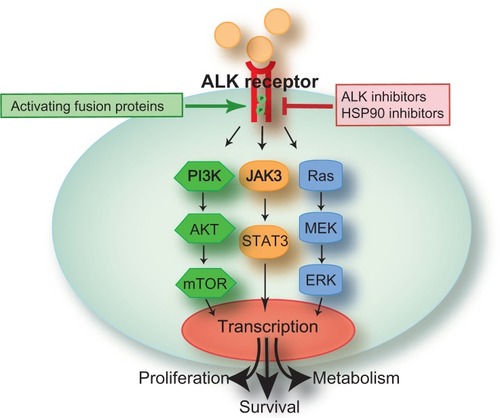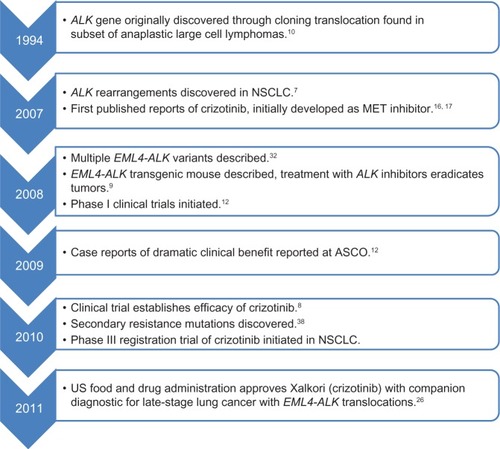Figures & data
Figure 1 Aberrant ALK signaling cascade.

Figure 2 Major events leading to rapid clinical development of crizotinib for ALK-positive NSCLC.

Table 1 Efficacy data for approval by the US Food and Drug AdministrationCitation24–Citation26
Table 2 Common adverse events reported in studies A and B
Table 3 Serious adverse events requiring crizotinib dose modification
Table 4 Mechanisms of acquired crizotinib resistance
Table 5 ALK-targeted therapies in development